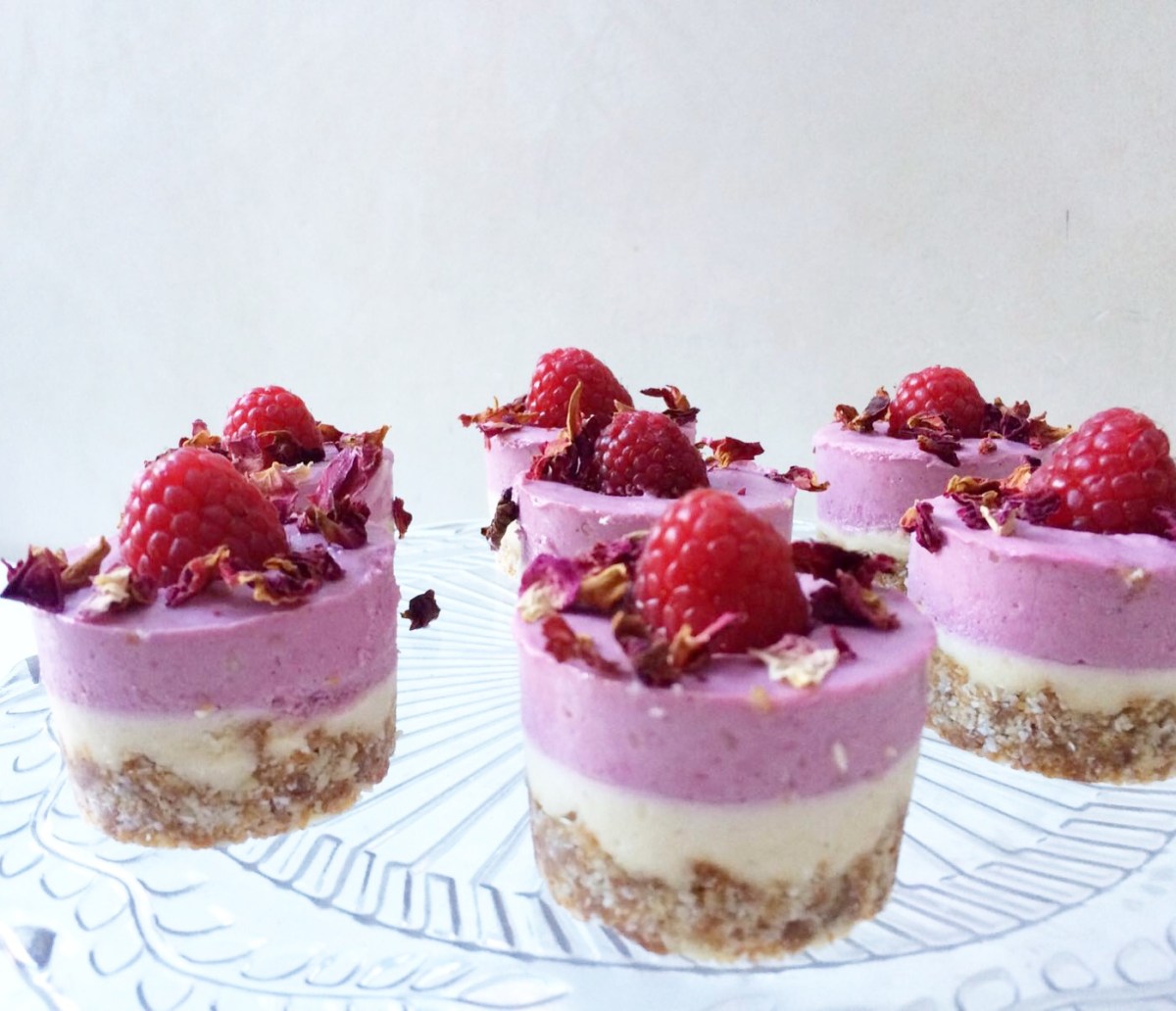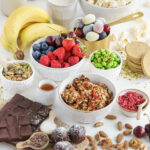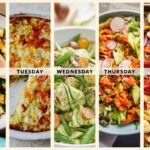Indulge your senses without sacrificing your values! This exploration of flexitarian cheesecakes unveils a world where creamy, decadent desserts meet mindful eating. We’ll journey through the evolution of vegetarian and vegan cheesecake adaptations, revealing the secrets to achieving that perfect balance of indulgence and health-consciousness. Prepare to discover unique flavor profiles, from the earthy richness of tofu-based creations to the velvety smoothness of cashew cream masterpieces. Each recipe is a testament to the creative possibilities of plant-based ingredients, showcasing textures and tastes that rival traditional cheesecakes.
We’ll delve into the specifics of crafting these delicious treats, providing step-by-step guidance, ingredient substitution options for various dietary needs, and innovative presentation ideas. Whether you’re a seasoned baker or a curious novice, this guide empowers you to create stunning flexitarian cheesecakes that will impress even the most discerning palates. Get ready to explore a world of creamy, dreamy possibilities.
Introduction to Flexitarian Cheesecake
The allure of cheesecake, a creamy, rich dessert, is undeniable. However, the traditional recipe, often laden with heavy cream and butter, can feel at odds with a health-conscious lifestyle. Flexitarian cheesecakes bridge this gap, offering the decadent indulgence we crave while incorporating more plant-based ingredients and mindful substitutions. They provide a delicious compromise, allowing for a treat that satisfies both the sweet tooth and a desire for lighter, potentially more nutritious options.
The evolution of vegetarian and vegan cheesecakes reflects a growing demand for alternatives to traditional dairy-based recipes. Early attempts often resulted in textures and flavors that paled in comparison to their classic counterparts. However, with advancements in plant-based milk alternatives, innovative vegan cream cheese substitutes, and a deeper understanding of food science, today’s flexitarian cheesecakes boast incredibly rich, creamy textures and complex flavor profiles that rival, and sometimes surpass, their traditional counterparts.
Key Differences Between Traditional and Flexitarian Cheesecakes
Traditional cheesecakes rely heavily on cream cheese, heavy cream, and often a generous amount of butter for their signature richness and creamy texture. The resulting flavor profile is typically tangy and intensely cheesy, sometimes balanced with a sweet element from sugar and added flavorings. Flexitarian versions, however, often replace some or all of the cream cheese with alternatives such as silken tofu, cashew cream, or various vegan cream cheese options. Heavy cream might be substituted with plant-based milks like coconut milk or oat milk, resulting in a lighter, yet still luxuriously creamy texture. Butter can be replaced with plant-based butters or oils, impacting the overall richness and mouthfeel. The flavor profiles of flexitarian cheesecakes can be surprisingly diverse, ranging from the classic tangy notes to more nuanced and subtle flavors depending on the chosen plant-based ingredients and added flavorings. For instance, a coconut milk-based cheesecake might exhibit subtle coconut undertones, while a cashew cream-based cheesecake could possess a naturally sweeter and slightly nutty flavor profile. The use of different fruits and spices further contributes to the wide range of flavor possibilities within flexitarian cheesecake recipes.
Ingredient Substitutions and Adaptations

Crafting the perfect flexitarian cheesecake involves careful consideration of ingredients to suit various dietary needs and flavor preferences. This section explores adaptable substitutions and exciting variations to expand the recipe’s versatility, ensuring everyone can enjoy a delicious and personalized slice. We’ll delve into ingredient swaps for common dietary restrictions, explore diverse flavor profiles, and demonstrate how to scale the recipe for different serving sizes.
Dietary Substitutions
Adapting the classic cheesecake recipe to accommodate various dietary needs is straightforward with the right substitutions. The key is to maintain the structural integrity and creamy texture while catering to specific requirements. Careful selection of alternatives will ensure a delicious and satisfying outcome.
- Gluten-Free: Replace traditional graham crackers in the crust with gluten-free graham cracker crumbs, digestive biscuits, or even almond flour mixed with a binding agent like melted coconut oil. Ensure your cream cheese is also certified gluten-free if necessary.
- Nut-Free: For a nut-free crust, use gluten-free oat flour, sunflower seed meal, or even a combination of rice flour and coconut flakes. Remember to check all other ingredients for potential hidden nut allergens.
- Soy-Free: Many cream cheeses contain soy lecithin as an emulsifier. Choose a cream cheese explicitly labeled as soy-free. Soy-free alternatives might include cashew cream cheese or a homemade alternative using soaked cashews (ensure these are not cross-contaminated with nuts if you have a nut allergy).
Flavor Variations
The basic flexitarian cheesecake recipe serves as a fantastic canvas for a wide array of exciting flavor profiles. A simple twist can transform the dessert into a completely unique culinary experience.
Chocolate Cheesecake
A rich and decadent twist on the classic. Add ½ cup of unsweetened cocoa powder to the cheesecake filling, along with a teaspoon of espresso powder for an intense flavor boost. For an extra touch, swirl in melted dark chocolate after pouring the batter into the crust. Imagine the deep, dark chocolate swirled beautifully within the creamy white cheesecake, a true visual and gustatory delight.
Berry Cheesecake
A refreshing summery variation. Fold in 1 cup of your favorite berries (fresh or frozen) into the cheesecake filling before baking. A vibrant mix of colors – perhaps a combination of raspberries, blueberries, and strawberries – would create a visually stunning cheesecake. The burst of fruity freshness complements the creamy texture beautifully.
Caramel Cheesecake
A sophisticated and intensely sweet option. Drizzle a layer of homemade caramel sauce over the baked cheesecake, creating a luscious topping. Alternatively, incorporate a caramel swirl directly into the cheesecake filling for a more integrated flavor experience. Picture the glistening caramel, a rich amber hue, contrasting beautifully against the creamy white of the cheesecake.
Adjusting for Different Pan Sizes and Serving Quantities
Scaling the cheesecake recipe is a matter of simple proportion. The key is to maintain the correct ratio of ingredients to ensure the desired consistency and flavor.
To adjust the recipe for different pan sizes or serving quantities, simply multiply or divide all ingredient amounts by the same factor. For example, to halve the recipe, divide all ingredient quantities by two. This includes the crust ingredients, the filling ingredients, and any toppings.
For example, if you are using a smaller pan, you’ll need less batter. If you are making a larger cheesecake, you’ll need to increase the amount of ingredients accordingly. Always ensure the crust is deep enough to support the filling, regardless of the pan size. The result should be a consistently delicious cheesecake, whether it’s a small individual serving or a large celebratory cake.
Presentation and Serving Suggestions
Elevating your flexitarian cheesecake from a simple dessert to a culinary masterpiece hinges on thoughtful presentation and pairing. The visual appeal and accompanying flavors significantly impact the overall dining experience, transforming a delicious treat into a memorable one. Consider the cheesecake’s flavor profile when selecting garnishes, sauces, and accompaniments to create a harmonious and delightful ensemble.
Creative Presentation and Decoration
The visual impact of a flexitarian cheesecake can be dramatically enhanced through creative plating and decoration. Imagine a vibrant slice of cashew-based cheesecake, its creamy surface swirled with a vibrant raspberry coulis, a cascade of fresh berries tumbling down the side, and a delicate sprig of mint resting atop. The contrast of textures and colors creates a captivating visual narrative. Alternatively, a chocolate-avocado cheesecake could be presented on a bed of cocoa nibs, dusted with cocoa powder, and adorned with candied orange peel for a sophisticated touch. For a rustic charm, a slice of pumpkin seed cheesecake could be served on a small slate plate, accompanied by a dollop of lightly sweetened whipped coconut cream and a scattering of toasted pumpkin seeds. The key is to let the natural beauty of the ingredients shine through.
Beverage and Accompaniment Pairings
The choice of beverage and accompaniments can significantly enhance the enjoyment of a flexitarian cheesecake. A light and fruity cheesecake, such as a strawberry-chia seed variety, pairs beautifully with a crisp rosé wine or a refreshing sparkling cider. The acidity of the drink cuts through the richness of the cheesecake, creating a balanced flavor profile. A richer, more decadent cheesecake, such as a chocolate-avocado version, might be better suited to a bold dessert wine like a tawny port or a strong, dark coffee. The contrasting flavors create a complex and satisfying culinary experience. Consider serving a slice of cheesecake alongside fresh berries, a light fruit salad, or a simple compote to add textural and flavor complexity. For a more savory element, consider pairing a savory cheesecake, such as a roasted red pepper and walnut variety, with a crisp salad or a side of toasted nuts.
Storage and Serving for Optimal Quality
Proper storage and serving are crucial for maintaining the optimal quality and flavor of your flexitarian cheesecake. Once prepared, the cheesecake should be refrigerated in an airtight container to prevent it from drying out or absorbing unwanted odors. It is best served chilled, allowing the flavors to fully develop and the texture to remain firm and creamy. If serving a slice that has been refrigerated, allow it to sit at room temperature for about 10-15 minutes before serving to soften slightly and enhance the overall eating experience. This allows the flavors to bloom and the texture to become more enjoyable. Avoid leaving the cheesecake at room temperature for extended periods, as this can affect its quality and texture. Proper storage and serving ensures the cheesecake remains a delightful experience from the first bite to the last.
From the subtle tang of a cashew cream cheesecake to the robust depth of a silken tofu creation, the world of flexitarian cheesecakes offers an unparalleled range of flavors and textures. This journey has not only unveiled delicious recipes but also highlighted the versatility and adaptability of plant-based ingredients. We’ve explored techniques to achieve the perfect creamy consistency, addressed common baking pitfalls, and offered creative presentation ideas to elevate your culinary artistry. Embrace the flexibility of flexitarian baking and embark on your own culinary adventures, crafting cheesecakes that are both delicious and aligned with your lifestyle.
FAQ Insights
Can I freeze flexitarian cheesecake?
Yes, you can freeze flexitarian cheesecake for up to 3 months. Wrap it tightly in plastic wrap and then foil to prevent freezer burn.
What is the best type of pan to use?
A springform pan is ideal for easy removal of the cheesecake after baking. Ensure it’s leakproof.
How can I tell if my cheesecake is fully baked?
The center should be just slightly jiggly, not completely firm. A toothpick inserted near the center should come out with moist crumbs, not wet batter.
Can I use a different type of sweetener?
Yes, maple syrup, agave nectar, or coconut sugar can often be substituted for granulated sugar, but you may need to adjust the amount depending on the sweetness level.


